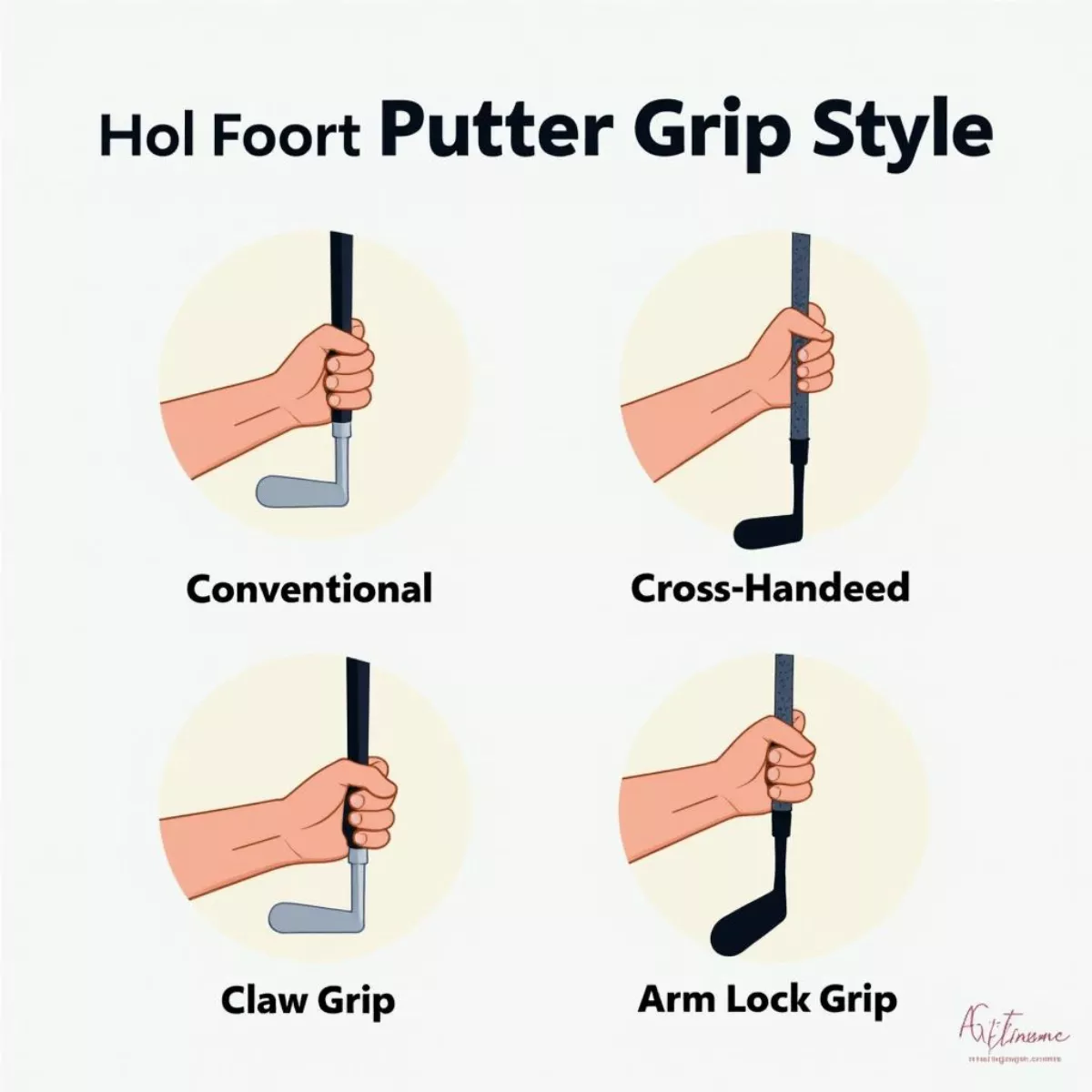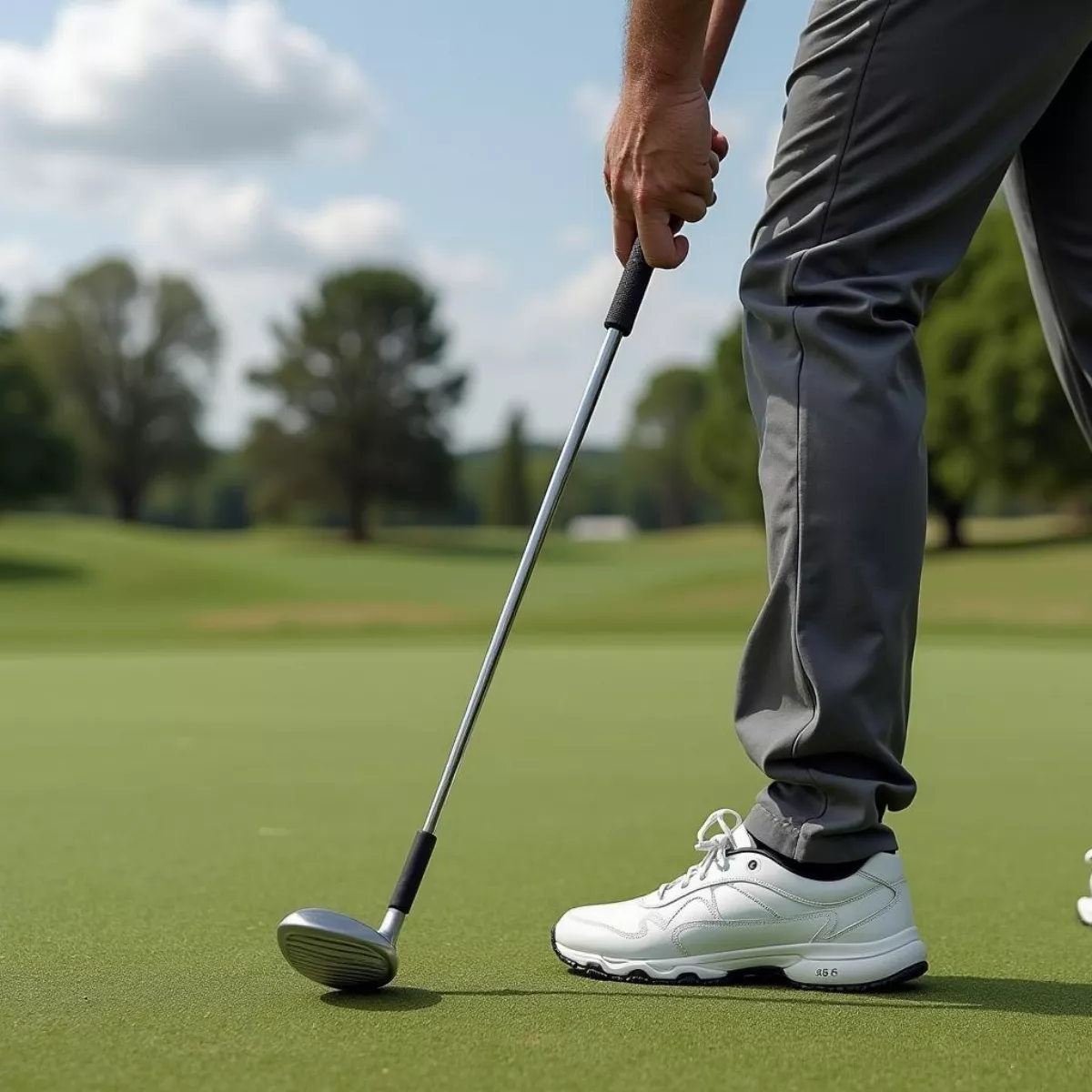Changing your grip on the putter can significantly impact your performance on the greens. Whether you’re struggling with distance control or accuracy, a well-adjusted grip might be the solution. In this guide, we’ll walk you through the steps to change your grip, explain different grip styles, and provide tips to help you master this essential skill.
Why Change Your Putter Grip?
Many golfers overlook the importance of their grip. Changing your grip can help with:
- Consistency
- Feel
- Alignment
- Stroke mechanics
By experimenting with your grip, you may just find the secret to better putting performance.
Common Putter Grip Styles
Before changing your grip, it’s essential to understand the various styles available. Each has its advantages and disadvantages.
| Grip Style | Description | Pros | Cons |
|---|---|---|---|
| Conventional | Fingers wrap around the handle; palms face each other. | Simple, straightforward grip. | Lacks stability for some players. |
| Cross-Handed | Left hand leads, right hand sits lower. | Helps with alignment and pressure. | Might feel unnatural for many golfers. |
| Claw Grip | Fingers are spread apart; thumb rests on the shaft. | Provides better control and stability. | Can take time to adjust if you’re not used to it. |
| Arm Lock Grip | Longer putter rests against the forearm. | Great for stability and minimizing wrist action. | Requires a specific putter length. |
 Common Putter Grip Styles
Common Putter Grip Styles
Steps to Change Your Putter Grip
Changing your grip can seem daunting, but it doesn’t have to be. Follow these steps to make the transition smoothly.
1. Evaluate Your Current Grip
Before making changes, take a moment to evaluate your current grip.
- How does it feel?
- Are you comfortable?
- Do you feel you have control?
Quote: “The grip is the only connection you have to the club; make it count.”
2. Choose Your New Grip Style
After evaluating your current grip, it’s time to choose a new one. Here are some tips on picking the right style:
- Try Before You Buy: If possible, experiment with different grips at your local pro shop.
- Consider Your Comfort: Choose a style that feels natural in your hands.
- Watch Professional Golfers: Observe how professionals grip the putter during tournaments.
3. Make the Change
It’s time to put your chosen grip into practice.
- Start with a Dry Run: Hold the putter as you would with your new grip without making any putts.
- Practice in Designated Areas: Use a putting green or your backyard to try out your new grip without the pressure of a round.
- Record Your Progress: Take notes on how the new grip feels and your putting results.
 Golfer Practicing Putter Grip
Golfer Practicing Putter Grip
4. Mind Your Setup
Once you’ve transitioned to your new grip, don’t forget about your setup:
- Posture: Stand tall and adopt a slight bend at the waist.
- Eyes Over the Ball: Ensure your eyes are aligned properly.
- Feet Position: Keep your feet shoulder-width apart for balance.
5. Get Feedback
Ask for feedback from fellow golfers or coaches:
- Video Yourself: Record your stroke to analyze your grip’s effect on performance.
- Seek Coaching: Sometimes, a coach can provide valuable insights that you might overlook.
Tips for Mastering Your New Grip
- Patience is Key: Give yourself time to adjust to the new grip before judging its effectiveness.
- Focus on Your Routine: Develop a consistent routine that includes your grip, stance, and stroke.
- Stay Positive: Changing habits can be challenging; maintain a positive mindset throughout the process.
Key Takeaways
- Changing your grip on the putter can enhance your putting performance in consistency, feel, and alignment.
- Common grip styles include Conventional, Cross-Handed, Claw, and Arm Lock.
- Evaluate your current grip, choose a new style that feels comfortable, and practice without pressure.
- Remember to maintain proper setup and get feedback from others to improve.
FAQ
1. How long does it take to get used to a new grip?
It can take anywhere from a few days to a few weeks, depending on your muscle memory and consistency in practicing.
2. Can I modify my grip style mid-round?
It’s usually best to stick to your chosen grip during a round, but if you’re struggling, subtle adjustments can be made.
3. Should I use a padded grip?
A padded grip can help alleviate hand tension and promote a relaxed grip, making it easier to control the putter.
 Golfer Choosing Putter Grip
Golfer Choosing Putter Grip
4. How do I know if I need to change my grip?
If you find you’re consistently missing short putts or lacking feel, it may be time to reconsider your grip.
5. Is it necessary to change grips as I improve my game?
As your skills develop, you might discover different styles that enhance your game further, so don’t hesitate to experiment.
6. Can my grip influence my distance control?
Absolutely! A proper grip allows better touch and feel, which is crucial for controlling distance.
7. Should I adjust my grip based on my putting style?
Yes, different styles can require different grips; find what works best for your unique stroke.
8. Do professional golfers change grips frequently?
Professional golfers often experiment with grips to find what best suits their game, especially when they’re struggling.
9. Is there a recommended grip size?
Grip size often depends on hand size and personal comfort; getting fitted by a pro can help find the right size.
10. How important is grip thickness?
Grip thickness can affect feel and control. A thicker grip may help relieve tension, while a thinner grip can improve sensitivity.
By changing your putter grip thoughtfully and intentionally, you can improve your performance on the course. Remember to remain patient, and soon enough, you’ll find your new grip leading to lower scores and outstanding putting skills! Happy putting!